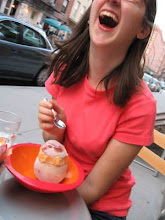Maybe Royal Weddings are not your cup of tea, but my guess is that around about now, the Queen is saying, “ I’d give my kingdom for a quiet cuppa”. Being The Queen, however, means behaving yourself at all times, so it’s certain that she is only saying this to herself. Sure, Elizabeth ll has help, but entertaining 600 guests for a Royal Wedding luncheon at The Palace must be work even for the most practiced hostess.
So, now that we’ve seen the dress and the first kiss, it’s time to imagine what the food is going to be like. You can go on the official Royal Wedding site to see the Royal Lunch menu, and check out how the cake will be made and decorated. If you stick with it, the pastry chef will explain the symbolism of the decorative details.
What they don’t delve into on the website is the tradition of the English Wedding cake. Just like the Monarchy, an English Wedding Cake it is based on solid long-standing traditions. Comprised mostly of dried fruit soaked in brandy and aged (ideally for at least 3 months- this makes it easier to slice), the cake serves as a culinary metaphor for the institution of Royalty itself. Dense, fruity, preserved (in this case with brandy) and covered in nuts (encased in marzipan which is almond paste), crowned in grand and symbolic ornamentation (in this case rolled fondant -the baker’s answer to Playdough), this institution is intended to last forever.
Since Roman times, nutmeats have been associated with fidelity and fertility. With this in mind, the top tier of the cake is set aside to celebrate either the first anniversary or first child of the happy couple. Portions of the main cake are shipped off to friends and loved ones who were unable to attend. Growing up in The States away from my relatives in the United Kingdom, I remember the occasional the arrival via post of a little box containing cake. There was usually some remnant of decoration atop the small slice. Somehow this seemed so thoughtful. Not only was there a bit of what is a remarkably substantial cake, there was also some of the fancy stuff.
Watching the telly this morning, the world witnessed the pleasure of embedded traditions (you did watch, didn't you?), and caught a glimpse of the fancy stuff as well. I know that Monarchies are controversial in this climate, but just for today I’m sure many felt there will always be a Britain!







